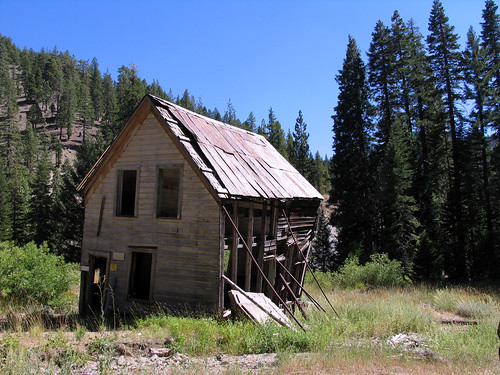Some time ago I became intrigued by an entry in the registration of the marriage of my great great grandparents Tom Reale and Mary Ann Quinn in Waterford in 1867.
In it, Mary Ann's father Richard's occupation is given as 'gold digger'. Initially, I thought it might be 'gold dipper' relating to some role in an electroplating factory. But I could find no reference to that type of factory in the Waterford area and a close inspection of the entry indicates that it more than likely reads 'digger'.
It then occurred to me that the California Gold Rush took place in the years between Mary Ann's birth in 1846 and her marriage in 1867. So I looked in US censuses for California in those years and found a number of references to a Richard Quinn a miner living in the Gold Rush town of Poker Flat in Sierra County, California. This Richard Quinn was Irish and married though not living with a family.
Further references have Richard Quinn buying the "Waterford Tunnel" claim in Poker Flat in 1867 and selling it again in 1884 with a store and half a cabin for $1,500 to Thomas Roach. In the period he was there he also was a Delivery Man delivering meat and other supplies to nearby mining camps and ran a General Merchandise Store in Poker Flat. He became a US citizen in 1867.
Co-incidence? Possibly..... but I think not. I think it entirely probable that either the aftermath of the famine or news of the Gold Rush prompted him to leave Waterford for California. Possibly his wife had died and he left his young family with relatives. Indeed the fact that Mary Ann was aware in 1867 that her father was a 'Gold Digger' would indicate that he remained in contact with Waterford maybe even sending money home.
Poker Flat is now one of many Gold Rush era Ghost Towns in Sierra County, California. The abandoned house in the picture is all that remains of the settlement.
These links
here and
here give some more info on the place.
I know that this Richard Quinn lived in Poker Flat from 1860 until at least 1886 though I don't know either when he arrived or when he died.
I hope someday to fill in the gaps on his story.









